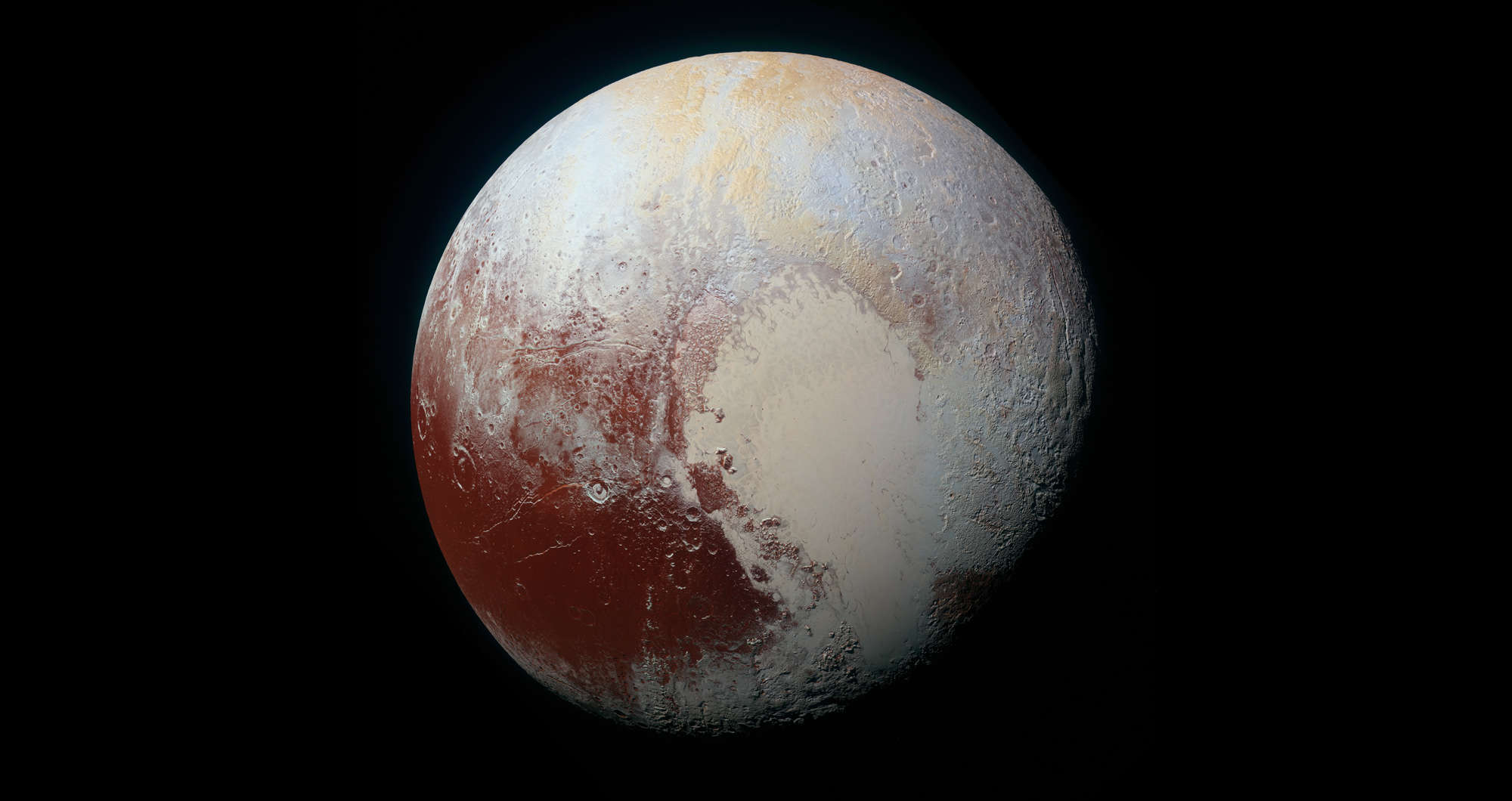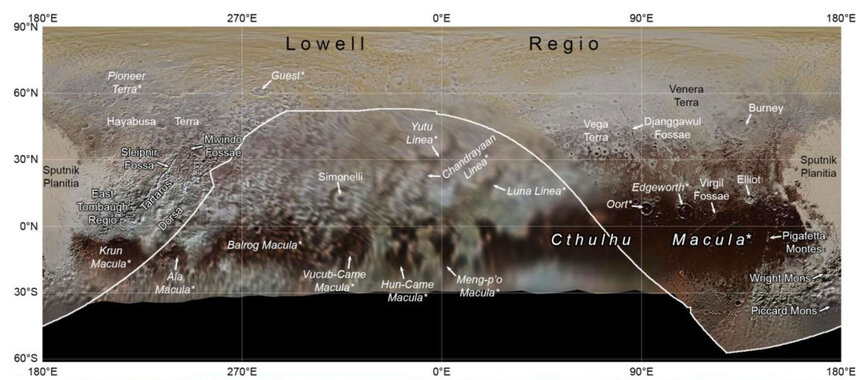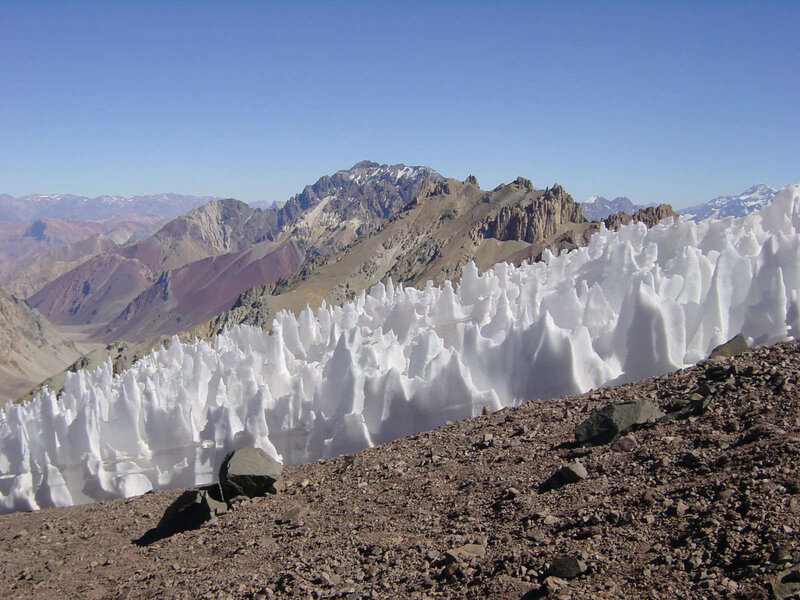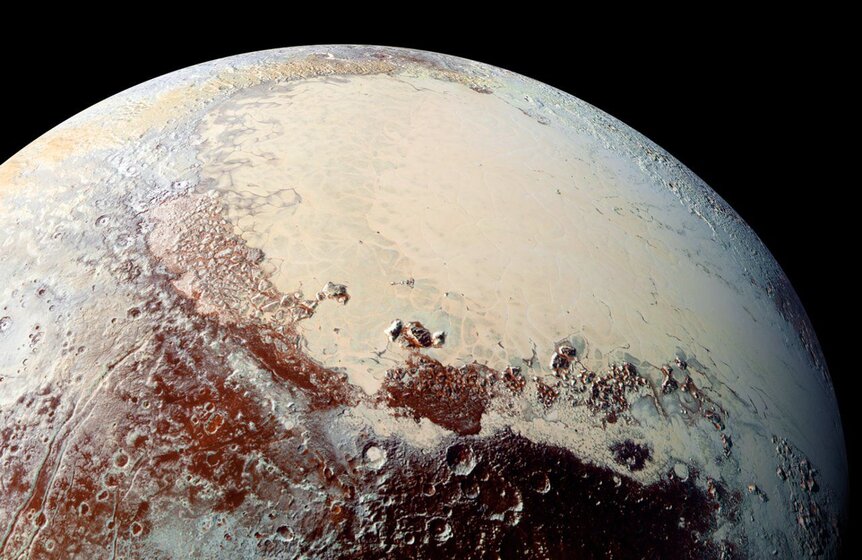Create a free profile to get unlimited access to exclusive videos, sweepstakes, and more!
Pluto’s far side: Exploring the backside of a tiny iceworld

On 14 July 2015, the New Horizons spacecraft flew past Pluto, and for the very first time in human history we saw that distant world in detail.
… or, well, half of it. The probe was moving relative to Pluto at a very zippy 14 kilometers per second — 50,000 kph! The part of the flyby where New Horizons could get the best images lasted less than a day. Pluto rotates once every 6 days or so, which is much slower than the encounter length, so New Horizons was only able to get high-resolution shots of one side of it, what the spacecraft team call the near side.
However, the other side of it (the far side) was in fact observed. When New Horizons was on approach, but still days away, the slow rotation of Pluto presented the entire surface to the spacecraft. Since it was still pretty far out, though, only low-resolution images were taken.
Still, these represent images with 15 to 30 times better resolution than ever seen from Earth, so they're valuable to understand Pluto's geology and morphology (surface structure). In a recently published paper, the planetary scientists on the New Horizons team described these images and what they may be saying about the semi-frozen rock-and-ice world at the edge of the solar system.
In many ways, the far side looks a lot like the near side. However, some care has to be taken; the lower resolution means very little relief (vertical topography) can be seen, and of course small features are too blurry to see clearly. What we're really seeing are albedo features, changes in brightness across the surface. Still, some interesting things turn up.
The dark regions on the nearside, called maculae (literally Latin for "spots"), are old — craters are seen in them, whereas younger areas like Sputnik Planitia, the western half of Pluto's "heart", is smoother due to changes that erode the surface and erase craters. The big one, called Cthulhu Macula, is relatively smooth and continuous.
These maculae appear to continue at the same latitude onto the far side as well, but their nature changes. They become smaller, patchier, and mixed in with what are called bladed regions. These are brighter areas that have a mottled appearance. They're seen on Pluto's near side as well, and are thought to be fields of penitentes — some of the coolest formations I've ever seen.
On Earth, at high altitudes like in the Andes where the air is dry, very odd spikes of ice stick up out of the ground. They're organized into rows, looking like kneeling people at a religious ceremony, which is how they got their name. They're sublimation features: At these elevations, the ice turns directly into a gas into the dry air. As this happens with a patch of ice, small hollows grow, getting deeper, and a positive feedback mechanism as sunlight bounces around inside them creates rows of them. As the hollows deepen, they leave behind the towers between them, the penitentes.
Fields of these structures form the bladed regions. Interestingly, on Pluto's far side, the maculae and bladed regions appear to be associated with each other. The scientists speculate that maculae are at slightly lower elevations, where bladed regions can form but are vulnerable to climate change. Perhaps something happened to change Pluto's environment (maybe its tilt changed, causing the Sun to warm previously colder places and vice versa) and the penitentes sublimated away entirely there, revealing a layer of darker material, or allowed darker material to accumulate there after the penitentes went away.
Only one crater was unambiguously seen on Pluto's far side, called Simonelli. It's big, about 250 kilometers wide — but then smaller craters can't be seen easily in the low-resolution images. It has a central peak, as many large craters do. In a large impact the surface flows like a fluid under the huge pressure, and splashes back to form the peak. Between the peak and the crater rim is brighter material that may be from ice that settled there after freezing out of Pluto's thin atmosphere.
Another intriguing set of features are thick, long, dark linear features called linea. It's not clear how they formed, although one set of them appears to surround a basin. But they seem to cluster around a spot that is almost directly opposite Sputnik Planitia. Sputnik is likely a very large impact feature, caused by a low-angle collision. Such an impact would send shock waves through the surface, which would converge on the opposite side of Pluto and create all sorts of chaos there. The problem is the linea don't quite match the models of how these seismic waves move, so their exact formation mechanism is still a mystery.
Unfortunately, with these images being as fuzzy as they are, it's not clear how much more we'll learn about this half of Pluto that was facing away from New Horizons during the flyby. Bigger telescopes planned on Earth may help, but there's nothing like being there. At the end of the paper the scientists make a pitch for the need for a Pluto orbiter, something to go there and stay there, mapping the bizarre terrain in detail and over a long period of time to look for changes.
I can't argue against how cool that would be! Actually doing it is another problem; the amount of fuel it takes to slow down makes it nearly impossible to send a chemical rocket orbiter to Pluto. An ion drive should fit this bill, since the amount of fuel needed is low. That would be amazing. But I imagine it would be a ways off, many years in the future.
There's so much real estate in the solar system we still need to see up close! Uranus, Neptune, their weird moons, more comets, and and and. But I have to say, after New Horizons, I'd put Pluto pretty near the top of that list.


















